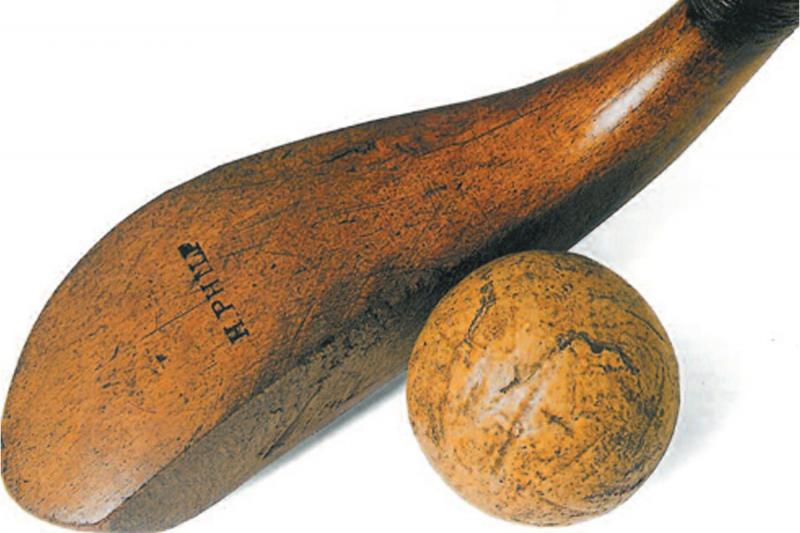Next time you jump out of a two-thousand-dollar golf cart and grab a three-hundred-dollar driver from your one-hundred-and-fifty-dollar golf bag and set your feet on the tee box wearing your eighty-five-dollar golf shoes, imagine doing the same thing in the mid-1500s in Scotland.
Saturday, August 12, 1547 (tee time 7:15 a.m. Greenwich mean time). It’s a balmy morning on the links. The wind is calm, blowing about 30 miles per hour in your face (30 mph is calm, just ask any British Open golfer) and you haven’t seen the sun in days. A salty mist is flowing in from the ocean and as you step to the first tee, your kilt is flapping in the breeze. It’s a great day for golf! You are out for a round with your lads on a course without a tree in sight. Tall grass, mounds and weeds are everywhere and hitting a sheep with your drive is not a penalty. You step up to the first tee and fluff up some dirt and grass to make a small mound, onto which you place your feathery ball for liftoff.
You set your feet in a wide stance, wearing heavy leather “golf shoes” with small nails driven through the soles to give you traction. In your non-gloved hands you are holding your favorite club, a mashie, which you have carved from a large piece of wood. You look down the fairway past the sheep to a long stick with an old kilt tied to it (on what could loosely be called a “green,” by today’s standards), then let the big mashie eat! Your next shot is about one-hundred fifty yards from the stick/kilt and since you don’t have a golf bag, you drop all your clubs (which only you have been carrying) and look for your niblick. Your niblick shot comes to rest about ten feet from the hole and once again you drop your clubs on the ground, this time near the green. You pick up your cleek and putt for a birdie. But as fate would have it, the feathery ball hits a “sheep pie” and you have to settle for a double bogey. You then do this again for eleven more holes (eighteen did not become the standard until 1857) or until you are frozen solid from wearing a kilt.
Golf was simple in those days, if you wanted a new driver (mashie) you could carve it yourself or if you were rich, have a craftsman carve it to your liking. In later years, most clubs were made from two different types of wood. The shaft was usually made from hazel or ash and the head of the club was made from a hardwood, such as, beech, blackthorn, pear or apple. They were attached together with a shim or split method, then tied tight with twine. Besides a mashie (driver), niblick (iron) and cleek (putter), other strange names were given to clubs. Wedges were known as “blasters,” four woods were “baffies” and two woods were “brassie.” In the 1800s, metal clubs came on the scene and the term “irons” came into play along with specific irons being called “jiggers” and “sammys.”
To keep pace, new golf balls were also being invented, because the old feathery ball now would explode when hit with a jigger or sammy. In 1905, the modern day golf ball was born with a hard rubber core and dimples to enhance spin and distance. In 1908, grooves were placed on clubs to improve play once more and many rich golfers had their own clubs designed to help them out in different conditions of play. Case in point, Walter Hagen had his own sand wedge designed with an extended flange and concave face (it was later outlawed by the USGA).
Today, you can find just about any type of club, from steel to graphite to titanium, with any type of flex, grip and custom fit you want. Golf has come a long way since kilts and mashies were in vogue.
19th Hole Trivia:
- In the 1960s, aluminum golf clubs were introduced to the public, but they were soon phased out because the shafts would bend easily (especially around a tree).
- In 1502, King James IV of Scotland had his own set of custom carved clubs made for him.
- In 1502, King James IV did not tee up his ball or carry his clubs. He had a servant do that for him. What a life! I wonder who kept his score?























































